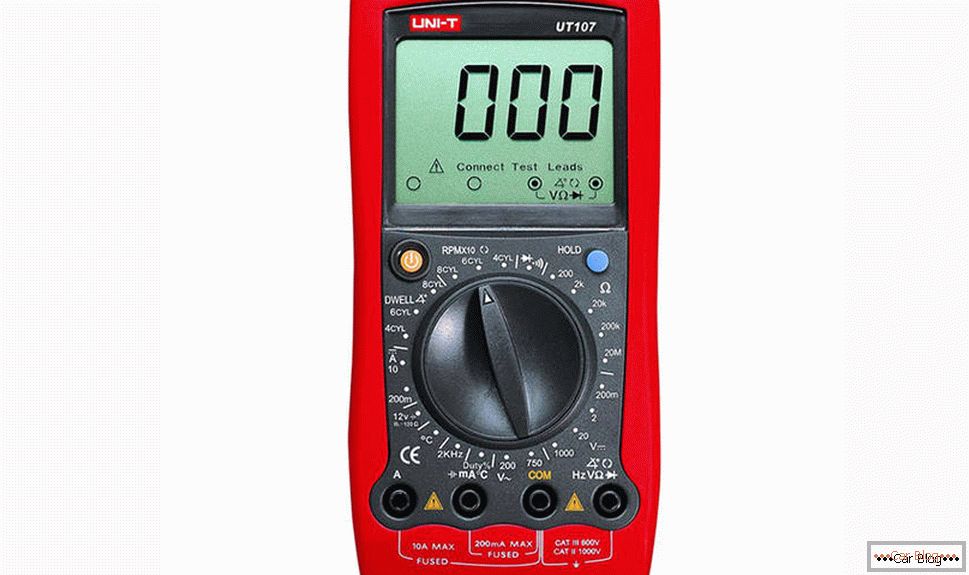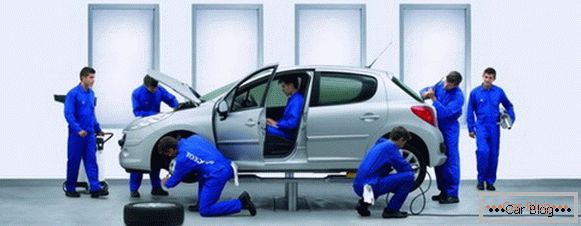Очень часто начинающие водители попадают в нелепые и трудные ситуации из-за того, что не знают, how to ride a mechanic. Наверное, каждый неоднократно наблюдал картину, в которой автомобиль долго не может начать движение, а стоящие за ним машины, не имея возможности миновать препятствие, сигналят, мигают фарами, чем еще больше вводят в ступор неопытного водителя. На самом деле научится водить машину с механической коробкой передач совсем несложно.
Content
- 1 How to get under way on the mechanics
- 2 How to change gears on the mechanics
- 2.1 Shift Up
- 2.2 Proper downshifting
- 3 How to brake on the mechanics
- 3.1 How to slow down on the mechanics
- 3.2 Proper engine braking
How to get under way on the mechanics
For training, it is best to choose a flat platform without biases, which will allow you to avoid arbitrary rollback. You can simplify the task by using the parking brake. Handbrake must be tightened before starting the engine. This will keep the car in place in the event that the driver did not turn off the transmission, and also eliminate the uncontrolled rollback when trying to get under way on the hill.
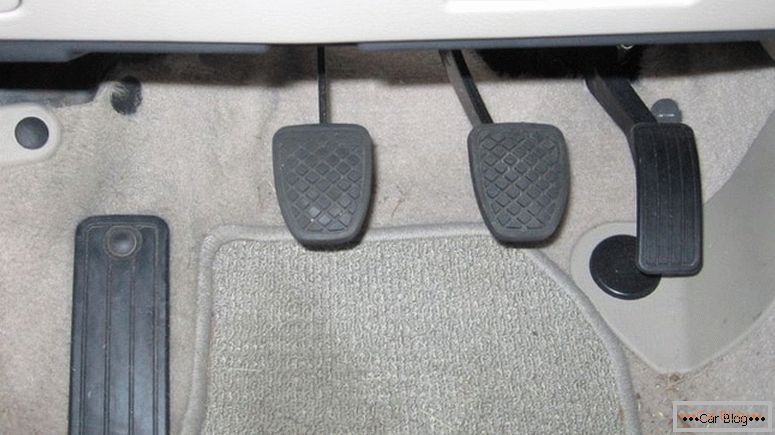
The legs on the clutch and gas pedals should work in antiphase - when squeezing the clutch, the gas should be released, and vice versa, when the clutch is released smoothly, you need to smoothly add pressure to the accelerator pedal.
Before starting to get under way, it is important to check whether the transmission is engaged or not by the movements of the gearshift lever. Next, you need to squeeze the clutch pedal to the end. This will be an additional guarantee that the car will not go after the ignition is switched on (for example, all Toyota cars will not start until the clutch is squeezed out). In addition, in the winter season, the starter will be easier to start the engine. After the engine has earned, you must turn on the gear, release the handbrake and start moving. So that the car does not suddenly rush from the place and does not stall, the driver must perform all actions smoothly and calmly. Release the clutch pedal is necessary until the moment when the engine speed begins to fall, and the car will vibrate easily. At this time, you need to gently push the gas pedal, while continuing to release the clutch.
Novice drivers can be quite hard to feel the moment of the start of the movement. In this case, multiple workouts can help. It is necessary to remember the sequence of actions: the car stands with the engine turned on, the clutch is fully depressed, the gear is engaged, the driver begins to smoothly release the clutch until the moment when the revolutions start to decrease. Once this has happened, it is worthwhile to squeeze the clutch again. It is necessary to repeat such training until the driver perfectly determines the starting moment. Also, training on the same principle would be useful only in the “started - stopped” mode. To say that the skill is fully learned, it will be possible after the driver has 10 confident starts out of 10.
See also: Replacing a driver's licenseHow to change gears on the mechanics
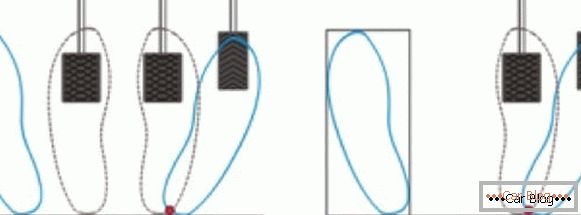
The correct location of the legs on the pedals
Today cars with automatic gear shifting have become very popular, and novice drivers prefer to study on such cars. It is worth noting that really the real driver can be the one who is able to drive a car with any kind of transmission. Therefore, in driving schools, the majority chooses a vehicle with mechanics as an educational vehicle, even if they have already purchased or intend to buy a car with a CVT or automatic transmission. To understand how to ride a mechanic, you have to practice a lot. But after that you will not have to think about the type of transmission, and feel confident driving any car.
On the mechanical box, the following speed ranges are adopted:
- 0 - 20 km / h - 1 gear;
- 20-40 km / h - 2;
- 40-60 km / h - 3;
- 60 to 80 km / h - 4;
- 80 km / h and higher - 5.
It should be understood that the speed range depends on the gear ratio of a particular car model, but in any case approximately corresponds to the specified scheme. Shifting gears should be smooth movements, which will not allow the car to "peck" nose and twitch. Often it is this feature gives an inexperienced driver behind the wheel.
In order to start the movement is to act as follows:
- Fully squeeze the clutch;
- Set the lever in first gear;
- Gradually release the clutch, at a certain stage, we hold and then completely release;
- After that, smoothly gas and pick up speed.
Of course, you will not leave long and far in this first gear (unless, of course, you practice in the waste ground).
Shift Up
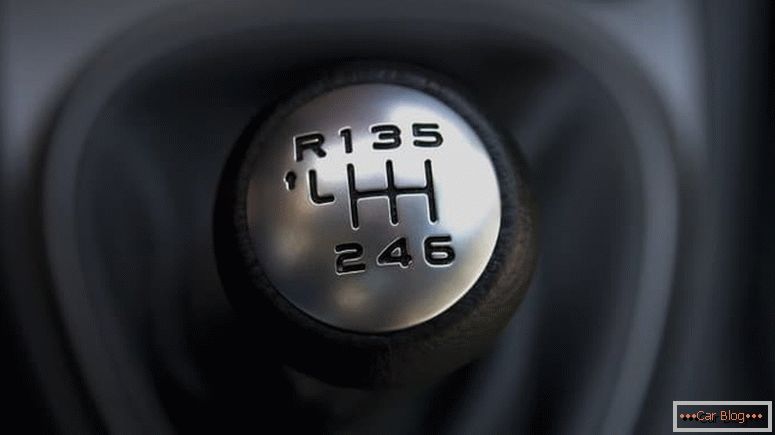
With increasing speed there is a need to switch to high gears. This process is as follows:
- Loosen the gas pedal and quickly squeeze the clutch;
- The gearshift lever is first moved to the neutral position, and then the next gear is engaged;
- The clutch is gently released and the gas pedal is pressed;
- The transition to the other higher gears is carried out in a similar pattern.
The greater the speed of the car, the faster it is required to carry out such an operation. It is not recommended to jump over gears, it is not prohibited, however, it is necessary to do this only if you have a certain skill, because the gear gears can wear out faster and the engine can stall.
Proper downshifting
Downshift is done in the following way:
- The foot must be removed from the gas pedal and slowed down to the desired speed;
- Next, fully squeeze the clutch;
- Passing a neutral position of the lever of the check point, we include the lower transfer;
- Let go of the clutch to the end and smoothly add gas.
Transition to a low gear can be accomplished by jumping over several gears (for example, from fifth to second or first speed). The motor and gearbox from such actions will not suffer, but, of course, the included gear must match the speed of the car.
How to brake on the mechanics
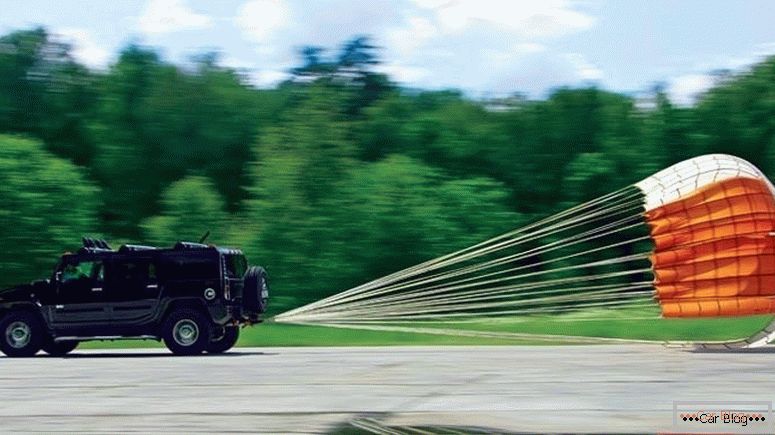
The ability to properly brake on the mechanics increases road safety
The most effective and safe way to slow down and stop completely on a wet road, downhill or in icy conditions will be the following: you must release the gas and gently press the brake, and before the final stop, squeeze the clutch so that the car does not stall. Then we switch the lever to the neutral position and release all the pedals.
There is another method that allows you to understand how to properly brake on mechanics. It is more suitable for braking in good weather conditions on a flat road:
- Let off the gas;
- Press the clutch pedal fully down;
- Gently press on the brake to a full stop.
- Next you need to turn on the neutral and release both pedals.
The gas pedal should be gently released and not to throw. When leaving the car, even for a short time, always place it on the handbrake.
How to slow down on the mechanics
To slow down and slow down a little, you need to completely release the gas and gently press on the brake, you do not need to touch the clutch. Afraid that the car will not stall. If you plan to slow down to downshift, you'll have to squeeze the clutch.
Proper engine braking
This method will be useful on steep descents. The main point of this method is to switch from high gear to low gear. Even just releasing the gas pedal of the car, without changing gear, the speed instantly decreases. This is due to the inclusion of idle mode. After that, you can go to a lower gear. Releasing the clutch pedal on the gas, you can not press at all. In this way, the braking effect is enhanced.

